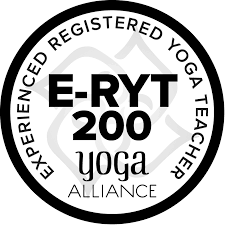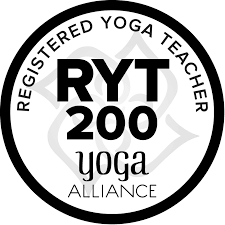Objective
Our 100/200-hour Yoga Teacher Training course is based on the traditional Ashtanga Yoga system established by Sage Patanjali more than 3000 years ago. The asana part is mainly derived from the Ashtanga Vinyasa Primary series and Vinyasa Flow. Our comprehensive TTC curriculum covers asana, pranayama, meditation, philosophy, alignment, adjustment and a lot of teaching practice. Apart from the Ashtanga Yoga Primary series you will also learn a lot of Vinyasa flows and how to create your own Vinyasa Flow sequences during your yoga teacher training with us.
Although we are traditional in our teachings but modern and unorthodox in our approach. We strongly encourage you to bring your own creativity, intuition and spiritual experiences into your learning and teaching styles. We don’t follow any religion or dogma in our teachings.
Our 100/200-hour Ashtanga Vinyasa Yoga Teacher Training course is for you if:
• If you want to become a qualified yoga teacher with an internationally recognised Yoga Alliance approved 200-hour yoga teacher training school.
• If you are looking for a yoga teacher training school with a tremendous amount of experience and with a long history of successful track record.
• You want to develop a deeper understanding of yoga, yogic philosophy and the yogic lifestyle.
• You want to take your asana, pranayama and meditation practice to the next level.
• You are looking for a comprehensive, safe, well structured, anatomically precise yet intuitive
approach.
• You want to share the teachings of yoga with others and help them lead a happy, content and meaningful life.
ASHTANGA YOGA
Introduction and history of Ashtanga Vinyasa system.
The four elements of Ashtanga yoga; Vinyasa, Ujjayi pranayama, bandhas and Drishti.
Modified Ashtanga yoga primary series: Standing asanas, seated asanas, finishing asanas.
In this class we teach you how to practice all the asanas with proper alignment and how to modify
them when necessary.
How to use props in various postures.
Teaching practice: This class is all about learning and practicing how to teach ashtanga yoga and
vinyasa flow classes. You will start practice teaching from the day one, starting from one-to-one to
larger groups.
Hands-on adjustment workshops: In these classes we will teach you the art of hands-on adjustment.
VINYASA FLOW, ADVANCE YOGA PRACTICE
• 60-minute-long intermediate Vinyasa Flow practice ones a week in the morning
• Advance yoga classes ones a week during the course
• 10hrs hands- on adjustment workshop during the course
• Principles and art of sequencing
• Learning how to create your own Vinyasa flow classes
• Receiving and sharing feedback on your classes as well as other’s
PRANAYAMA
Introduction to pranayama
Prana, breath and pranayama
The science and anatomy of pranayama
Panic body and spiritual significance of pranayama
Types of pranayama you will practice in this course: Nadi Shodhana, kapalbhati, bhastrika, ujjayi,
bhramari, surya bheda.
How to practice and teach pranayama
MEDITATION
• Meditation: Introduction, definition and aim
• Science of meditation
• Effects of meditation on brain and mind
• How to do meditate
• How to teach meditation
• Types of meditation to be covered: Chakra meditation /Kundalini meditation, Om meditation,
Nada meditation, Pranic Energisation technique meditation.
PHILOSOPHY
Yoga: History, meaning and lifestyle
Ashtanga yoga & Patanjali Yoga Sutra
The eight limbs of Ashtanga Yoga
The yogic life styles
Obstacles on the path of yoga and means to overcome them
Importance of satsang and sangha
Concepts of three gunas: Satva, Rajas, Tamas.
Life style and ethics for a yoga practitioner and teacher
ANATOMY
Our specially designed practical anatomy classes are the back bone of our yoga teacher training course. While most yoga teacher training schools in the world fail in even touching the basics of anatomy, we can proudly say that we excel in this department. Our functional anatomy classes ensure an understanding of the key muscles and bones involved in asana practice and their
associated health benefits and contraindications. Substantial emphasis is placed on analytic training, muscular and skeletal anatomy, individual physical limitations and differences. Our anatomy module covers the following:
• The basics:
o Skeletal system, muscular system, connective tissue, nervous system, and
movements of the major joints of the body
• Functional anatomy: Concepts of functional anatomy and physiology related to movement.
• Application of anatomical principles to yoga practice:
o Mechanics of yoga asana
o Healthy patterns of movement
• Muscular and skeletal differences i.e., compression, tension, and proportion and orientation
theory.
• Study of different regions of the body: The foot, knee, hips, spine, and shoulder
CONCEPTS OF YOGIC DIET AND AYURVEDA
• Yogic diet according Ayurveda
One of the ways of food classification in Ayurveda is based on rasa. There are six major tastes
according to Ayurveda, viz., sweet, sour, salty, pungent, bitter, and astringent. There are primary and
secondary qualities (guna) that increase the properties of a material
• Yogic diet according Yoga According to Yoga, there are three types of foods: Sattvic, Rajasic and Tamasic. The Sattvic diet (pure and balanced) is believed to increase energy, produces happiness, calmness, and mental clarity.
In this era lifestyles are changed which has a negative impact on health. Eating habits are also changed due to technological advancement and easing lifestyles. Due to this risk of lifestyle is also increasing. Yoga and Ayurveda Shastra are life sciences that give importance to diet for a healthy life.
Yoga gives the concept of Satvik, Rajsik, and Tamasik diets along with Mitahar, Hita Ahar, and Ahita Ahar. Ayurveda gives the concept importance of Ahar, Shadrasatmak Ahar, Bhojan Kala, Ahar matra, etc.
Both Yoga and Ayurveda give similar concepts of diet such as Satvik Ahar, Mitahar (moderate and balanced diet), Pathya Ahar (beneficial and preferred diet), and Apathya Ahar (harmful and
prohibited diet). Also gives importance to the time of food intake, and quantity of food.
TEACHING PRACTICE, METHODOLOGY AND TECHNIQUE Since the whole purpose of our TTC is to give you enough knowledge for personal spiritual growth as well as skills and tools to help others by teaching them yoga, we provide you a lot of opportunities to practice teaching yoga from the very second day of your yoga teacher training course instead of waiting for the same till the end. This ensures that you let go of all the fears of teaching from the day
one and receive feedback from your fellow students and teachers alike so that you can continue to improve your teaching skills throughout the course.
Our 100/200-hour Yoga Teacher Training course will help you to deepen your connection with your emotions and feelings which will empower you to teach from your heart. Our Yoga Teacher Training program is a practical training designed to help you become a confident and effective Yoga teacher for all level of students.
The teaching practice classes during your TTC will cover the following:
• Ashtanga Yoga: How to teach Ashtanga Yoga Primary Series class or classes based on
Ashtanga.
• Principles of sequencing a Vinyasa Flow class
• How to create your own yoga sequences
• How to teach a vinyasa flow class
• Finding your voice as a teacher
• Class and floor management
• Your presence in the class as a teacher
• Dos and don’ts in the class room
• Teaching practice: You will start practicing teaching from the day one or two under the
guidance of your teachers. In your first teaching class you will teach one on one for 5-10 minutes, but as the course progresses the group size and the length of class will gradually
increase. Your final class will be approximately 45-60 minutes.
• Teaching feedback: You will receive feedback on your teachings from your classmates and
teachers, to help you to improve your teaching skills and to find your unique voice and style as a teacher
• In addition, you will learn
o Principles of demonstration.
o Teaching styles and Qualities of a good yoga teacher.
o Voice projection, floor presence, safety.
o Hands-on adjustments
o Ethics of a good yoga teacher and much more.
• By the end of the course, you will be able to teach Ashtanga Yoga classes, Vinyasa flow class and mixed-level open yoga classes confidently.




